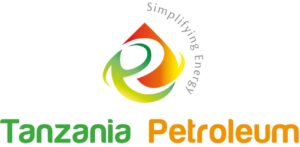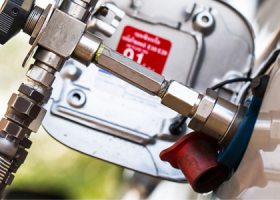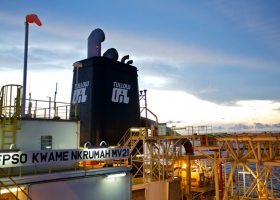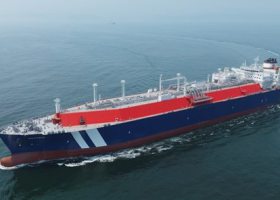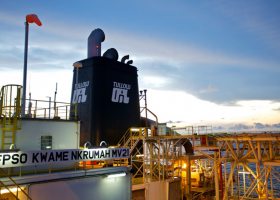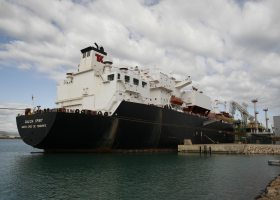
Are you want to understand the business of oil and gas industry?
The article provides insight on 10 lucrative businesses that oil and gas companies do in Tanzania
1.Producing oil and gas.
This business involves identifying oil or natural gas, develop and extract the resources and extract. Companies involved in this business often called exploration and production companies.
Also, they are called oil and gas producers. This business provides high return and high risk as well.
It is can be risky to drill a well to a place where nobody has drilled before. But there less risk if oil companies drill the location where has proven record of oil and gas deposits. If you strike crude oil or natural gas you make the huge profit. But if you find no oil or natural gas, you lose the money.
Products and Services.The main products in this business are natural gas and oil
The well is estimated to produce oil or natural gas for 20 to 60 years. This means find oil and gas you will be receiving a percentage of income from the sales of natural gas over 20 years.
To venture into this business companies should lease a land from the host government or landowner.
In this business, an oil company with an excess of sufficient capital, have the advantage to purchase or lease equipment than those who are not.
A hole with no oil and gas is known as a dry hole. A company that continues to produce oil and gas from the existing well and knows where to drill productive well make a huge profit.
In this business, companies generate income through the sales of oil and natural gas to the utility companies, factories, and fertilizer plants
The huge demand for natural gas in Tanzania is supported by increasing industrialization and the power demand.
‘Each exploration and production companies has its own methods of identifying and extracting oil and natural gas. The competitive advantages for the companies in this business depend on the ability to do the best job and extract oil or natural gas safely and with less environment impacts.
The major companies involved in the business of producing oil and natural gas include:
- The US-based Apache, ConocoPhillips, and Exxon Mobil
- The London based BP and Lukoil
- Russia based Tatneft
- Brazil state owned PETRONAS
- Royal Dutch Shell in the Netherlands
Saudi Aramco in Saudi Arabia
The major companies involved in discovering and producing gas include
Shell partnered London-based Ophir energy and Singapore-based Pavilion energy, operates block 1 and block 4 offshore Tanzania and has discovered about 17 trillion cubic feet of gas in both blocks.
Meanwhile, the Norway-based firm partnered with Exxon Mobil has found 22 trillion cubic feet of natural gas solely in block 2 offshore Tanzania.
Shell, Statoil and their joint venture upstream partner plant to build $30billion Liquefied natural gas plant to cool and export gas to the international market.
Also here are the companies that produced gas on land and selling to the local market
Songo Songo field has been operated by Canada- based orca exploration under its subsidiary Mauritius –based firm Pan African energy started produced gas in 2004.
Mnazi Bay field started producing gas in 2015 operated by Pertamina-owned Maurel & Prom partnered with Alberta-based Wentworth Resources and the state-owned oil company Tanzaniapetroleum development corporation have a stake in the field.
Also, Kiliwani North field started in 2016 operated by Uk-independent oil and gas exploration firm, partnered with Abu Dhabi-based RAK Ga
2. Oil and Gas Drilling
Companies in this business they drill oil or natural gas and get it out of the ground.
Oil and gas drilling companies are contracted by oil and oil and gas producers to help them drilling the oil and gas wells.
Major companies include Atwood Oceanics, Helmerich & Payne, Nabors Industries, Patterson-UTI Drilling, and Transocean (all based in the US), as well as Ensco plc (UK) and Ensign Energy Services (Canada).
Drilling companies that have been contracted to help gas producers in Tanzania are:
- Ocean Rig Poseidon
- The Noble Globetrotter 2 rig
- Caroil rig
3.Oil and Gas Servicing
The roles for the organizations in this sector is to assist companies the development and extraction of oil and natural gas.
Drilling companies contract service companies to help them make the process of extracting oil and gas into fruition.
Big compaies in this business include:
Baker Hughes,
China Oilfield Services, Halliburton,
Nabors Industries, National Oilwell Varco, Saipem, Schlumberger, Transocean, and Weatherford International.
The companies that have been operating in Tanzania are Baker Hughes, Schlumberger, Weatherford International. Halliburton,
Product and Services: Companies in this business provide numerous service to the drilling companies include
Oil and gas service companies design pipes, they provide most of the engineering and technical work range from construction, electrical to mechanical work and supply of equipment. Large companies they help drilling companies in the jobs such as cementing, logging and testing. They also manufacture equipment used in oil and gas
. Small companies can profit in this business by specializing in the specific services such as maintenance services or welding and fabrication and gain experience in their local market and expanding in the new geographic region when companies have huge local experience.
Now , you have seen three types of businesses done by oil and gas companies
The first is discovering and producing oil and gas. Second is drilling for oil and gas business and the third is service business that assists drilling companies.
To have a clear understating of this three businesses, let take an oil company named Shell as an example.
Shell is in the business of discovering, developing and producing oil and gas resources.
The government via the ministry of energy award the Shell a license to drill a natural gas in Area 1 under the sea, In Mtwara region.
But shell does not have a drilling rig (a facility used to drill a well). So Shell contracted a drilling company named The Noble Globetrotter 2 rig to help them in the drilling of natural gas.
Also, The Noble Globetrotter 2 rig hired oil and gas service company called Schlumberger to help the completion of the drilling operation and maintenance of the equipment.
Also, The Noble Globetrotter 2 rig may hire a local company to offer supportive services such as the supply of safety and personal protective equipment, such as boots, gloves, fire extinguisher, catering services, welding, and fabrication.
4.Manufacturing Oil and Gas Equipment
This involves companies that manufacture equipment, tools, and machines used in the development or during searching and extraction of oil and gas
Major companies include GE Oil & Gas, National Oilwell Varco, and Schlumberger (all based in the US), along with Shandong Kerui Petroleum Equipment (China), Tesco (Canada), and Weatherford International (Switzerland).\
Major products include drill bits, drilling pipe, drilling motors, derricks, valves, portable rigs, well monitoring instruments, tubing, wellheads, blowout preventers, wireline systems, and oil and gas separators. Many companies also offer a line of oil and gas field services. Such services may include drilling, well completions, geological and drilling surveillance, and artificial lift services (pumps and other systems used to lift oil when a well no longer flows by itself).
5.Studies and Survey
These are companies involve in gathering and interpret and map and collect both surface and subsurface information. We call this geophysical data
Major players in this business in Tanzania are ION Geophysical, Geospace, Global geophysical service all based in the US
Demand for this business depends on the exploration activities. If there is a serious level of exploration activities in the country, the demand for this services become higher.
6.Petroleum and Petroleum Wholesaler Product
Companies in this industry store, transport, and distribute wholesale petroleum and petroleum products; some wholesalers also operate bulk storage facilities. Major companies in Tanzania include Total, Oryx, Puma energy Oilcom etc, Here is where there are potentials for the local entrepreneurs who business of transportation of oil and petroleum products, oil and gas retail shops etc.
7.Oil and Gas Pipeline Transportation And Storage Business
This involves companies that construct, operate and transport oil, natural gas and petroleum products from the oil fields to the powerplants or utilization points, or tank farms.Companies in this include (all based in the US); along with China National Petroleum, Enbridge (Canada), EON Ruhrgas (Germany), Korea Gas, TransCanada, and Transneft (Russia).
The market in this depends on economic activities and population growth.
8.Petrol station
A petrol station business involves three parts, selling fuel such as diesel, petrol, kerosene, lubricant oil/ engine oil. And also petrol station make an additional income doing side business related to petrol station like a car was mechanic workshop etc. Also, the other part of petrol station is offering a variety of products from Soda, waters, milk to snack food. If you are wondering why you should get into this line business, then the answers are simple,
Most people are unaware of how the petrol station business really function in Tanzania. When people see around the street petrol stations carrying a logo of oil company such as TOTAL.
They think the petrol stations are directly owned by Total. That is untrue. Total, Puma, Oil com and other oil companies own 2 to 3 percent of the petrol stations. Most of the petrol stations you see around street are owned by independent petrol station retailers who have licensed to represent a brand of oil companies like Total or Puma.
So here is how it works. An individual, build a petrol station from scratch. He installs all necessary equipment such as pumps and underground storage tanks. And run the station under the name or brand of oil companies such as TOTAL.
The Tank truck comes from Total to refill the station’s underground storage tanks. The driver makes a record of the amount of the fuel he has delivered. At each month the owner of the fuel station has to pay total for the fuel have sold to their customers. Set up petrol station may be easy but running it can be the little bit frustrating
Dear Readers , I hope this help. See you next time.
Hussein.boffu@tanzaniapetroleum.com
+255655376543
